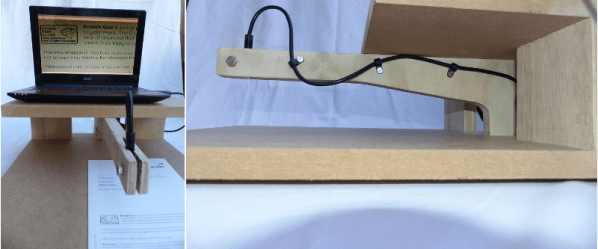Borescope cameras are great inspection tools. They’re flexible, they magnify on a variable scale, and they come with their own lighting. Oh, and they’re pretty cheap, too. Because of all this, these tiny cameras can serve a number of purposes. Doctors put them down your cake hole to look for ulcers and polyps, and mechanics probe pistons with them to check for buildup. [agulesin] used one to make a reading aid for his mom.
Mom suffers from macular degeneration, and can’t read print smaller than 1″ (2.5cm). This condition can cause issues ranging from blurred vision to complete loss of vision in the center of the visual field. Standard handheld magnifiers can work fairly well depending on a person’s condition, but they only provide a fixed magnification level and most offer no lighting.
[Agulesin] had the idea to make a reading magnifier by feeding video from a downward-facing borescope camera to an old netbook. The camera is mounted in a plywood arm that’s fixed to a bi-level platform made from scrap MDF. It’s a simple idea that’s well executed—just project flat, printed material on to a vertical screen. There’s nothing for the user to hold or mount, and no risk of neck strain from looking down over the material.
With any simple project comes limitations. The camera is fixed in place. This rig built to view sheets of A4 paper (between letter and legal size) that are moved around by the user, and it can only handle a stack of so many sheets. If [agulesin]’s mom tried to read a thick novel this way, the camera would likely not focus. Even so, it’s a great piece of assistive tech for people with low vision.
















